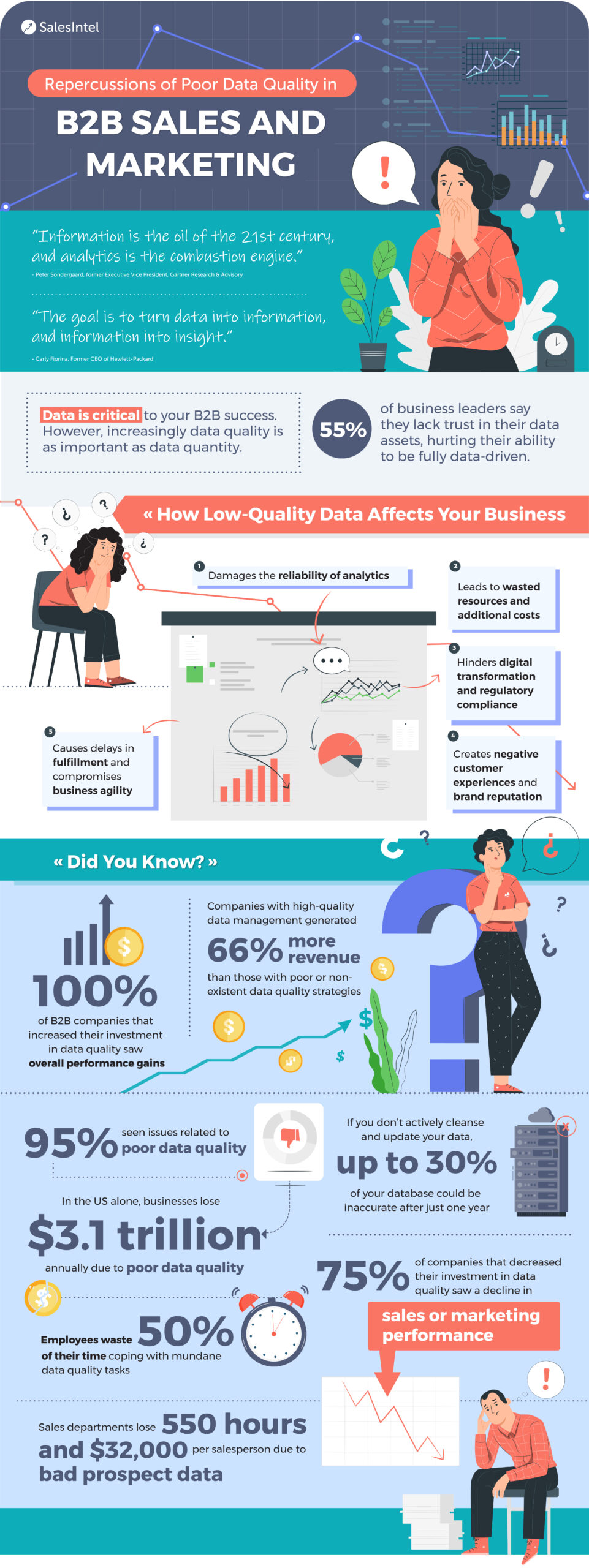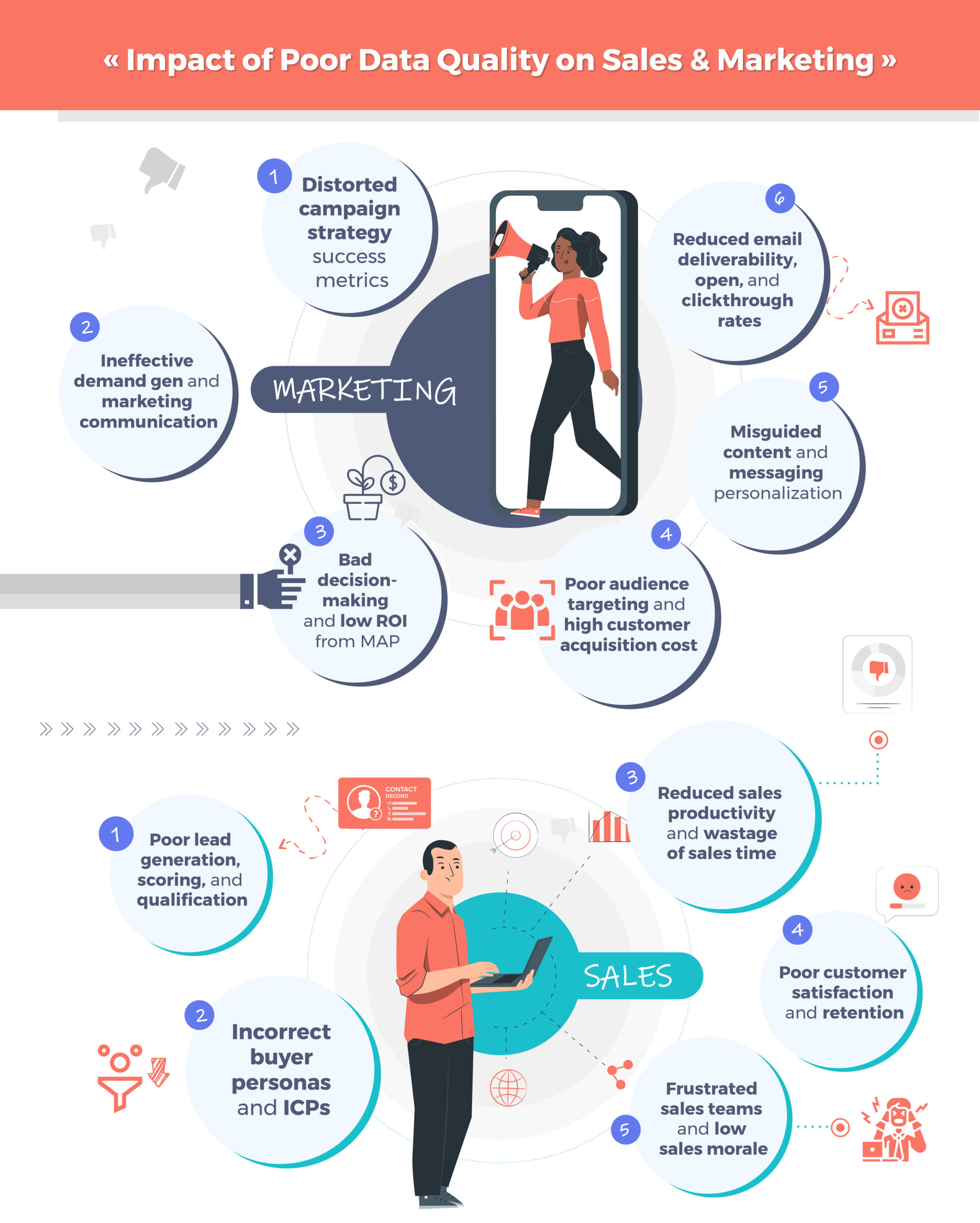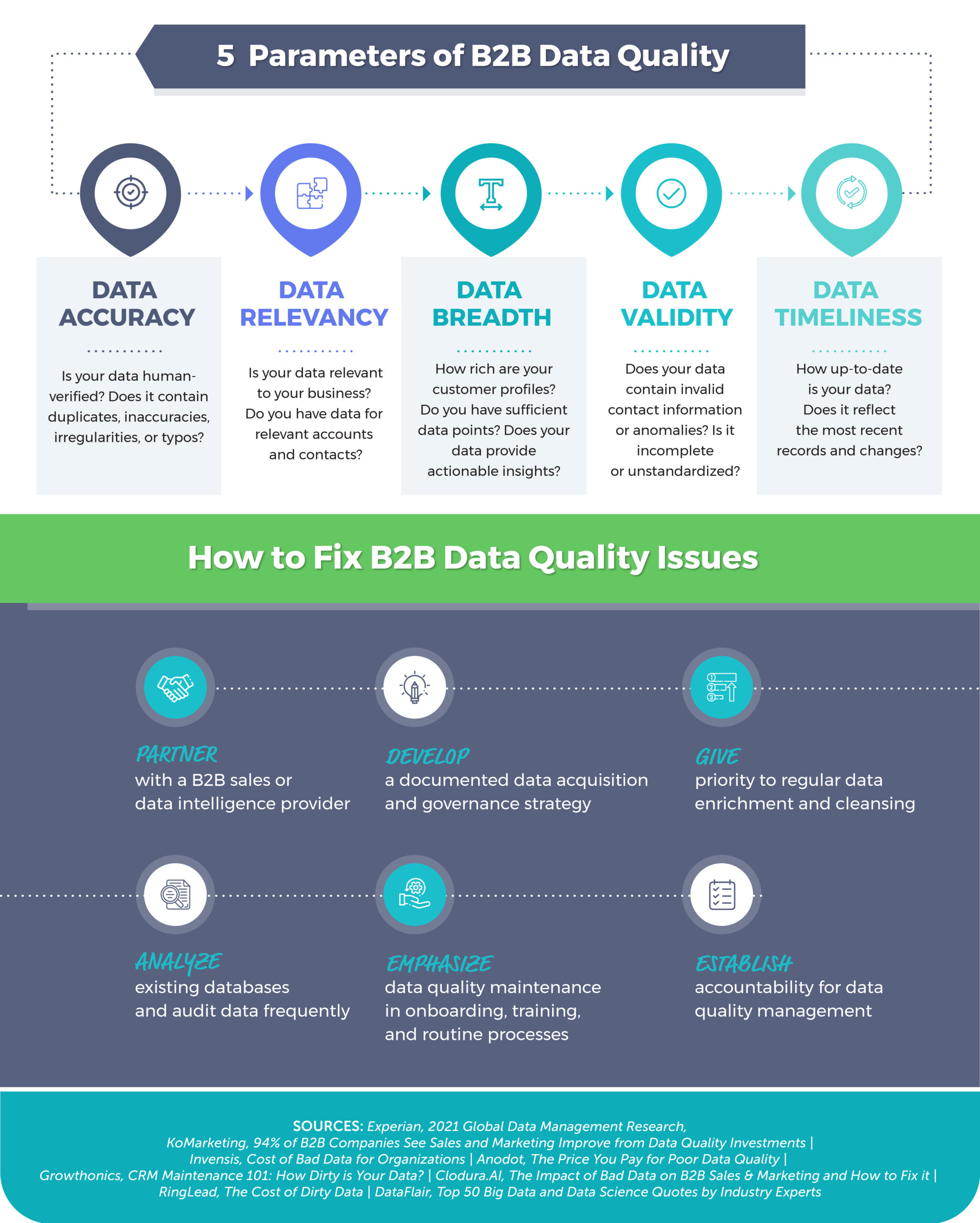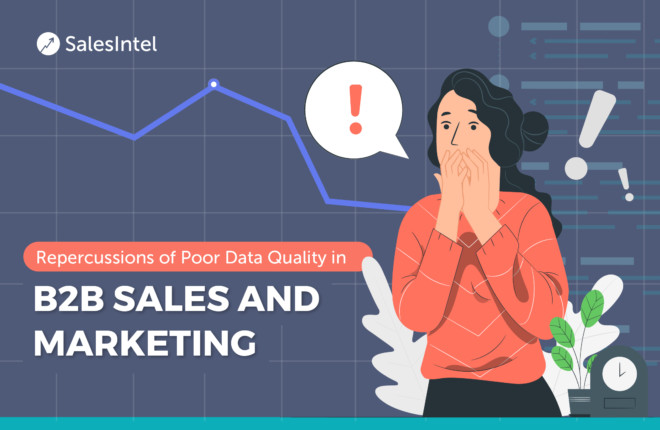Poor data quality is a serious problem that B2B organizations simply can’t afford to ignore. There are several ways it can render your B2B sales and marketing efforts futile. If you don’t effectively and quickly deal with the B2B data quality crisis that comes your way, it could affect your revenue growth too.
Low-quality data not only hampers the performance of your sales and marketing teams but also limits the functionality of your CRM and MAP. If your B2B data contains spelling variations, duplicate entries, missing information, inaccuracies, or inconsistencies, make it a priority to fix it immediately. Know that every time you delay fixing bad data, you add to the negative repercussions for sales and marketing.
With data decaying by approximately up to 30% annually, it is of the utmost importance to routinely clean, update, and enrich your B2B database. People change careers, take up new roles, change their phone numbers, or move to a new location. If your database isn’t keeping up with the latest changes, it can quickly become outdated and stale.
Besides data decay, your B2B organization could suffer from low data quality due to:
- System-related challenges like the non-integration of databases
- Poor data migration practices
- Human errors and machine errors like optical character recognition issues
- Failure to properly follow data capture and insertion protocols
- Data ambiguity and lack of complete contact or company information
Nevertheless, you can take initiative to maintain a top-quality B2B database. For instance, you can partner with a reliable B2B data services provider to clean and enrich your data automatically or manually. If they have an accurate, verified, and comprehensive database, you can also leverage it to add new data points, improve data integrity, and further enhance your B2B data quality.
The infographic presented here shares how substandard data quality can negatively impact your B2B sales and marketing. It also informs you about powerful ways to maintain high data quality.







